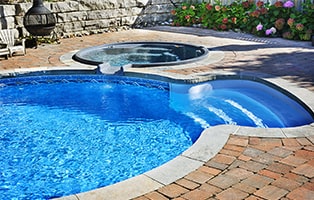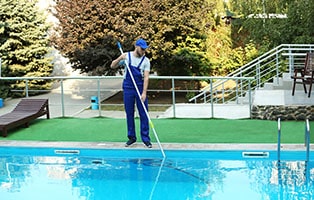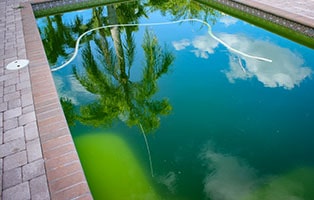Here are all the pros and cons of automatic pool cleaners. Read on if you need to know which one to buy.
Having a swimming pool right in your backyard can be a wonderful thing. That’s because you get to take a refreshing dip in its bracingly cool waters during the sweltering dog days of summer, making the warmer months so much more bearable.
However, keeping your pool water blessedly free of unsightly debris can be an overwhelming task—particularly if you’ve got a lot on your plate. This can turn pool ownership into an onerous responsibility instead of the magnificent enjoyment you initially envisioned.
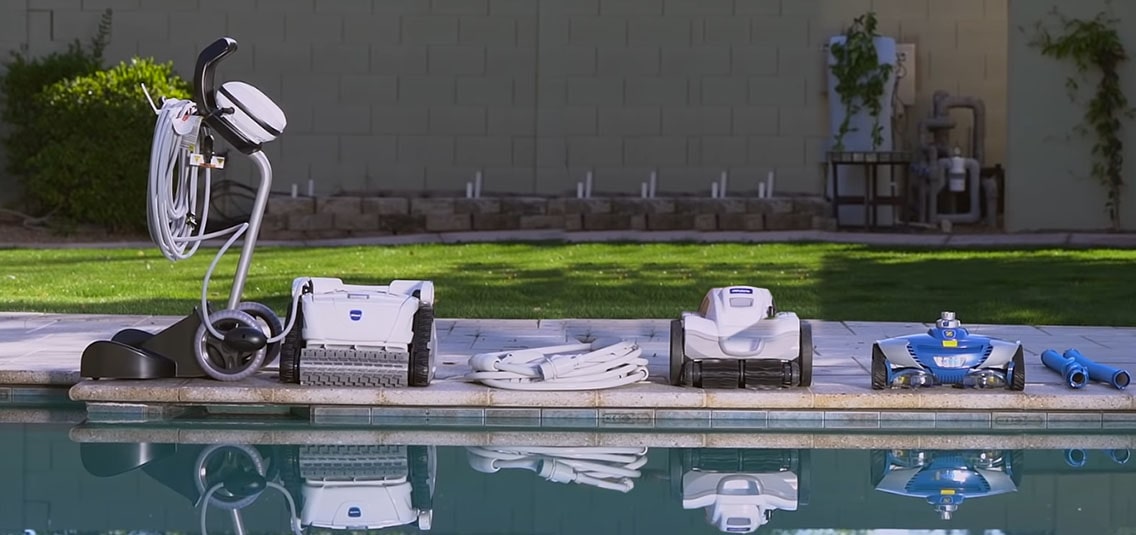
Happily, technology has progressed to the point where you no longer must arduously scrub the pool yourself. Instead, there are a dizzying variety of automatic pool cleaners that can do it all for you.
Automatic pool cleaners keep your pool crystal clear with little effort on your part. However, knowing which type to get can be a bit of a challenge.
There are four types of automatic pool cleaners: pressure-side, suction-side, skimmers and robotic. Which one will be best for you depends on which features you’re looking for, what your current pool setup is, and how much you’re willing to spend.
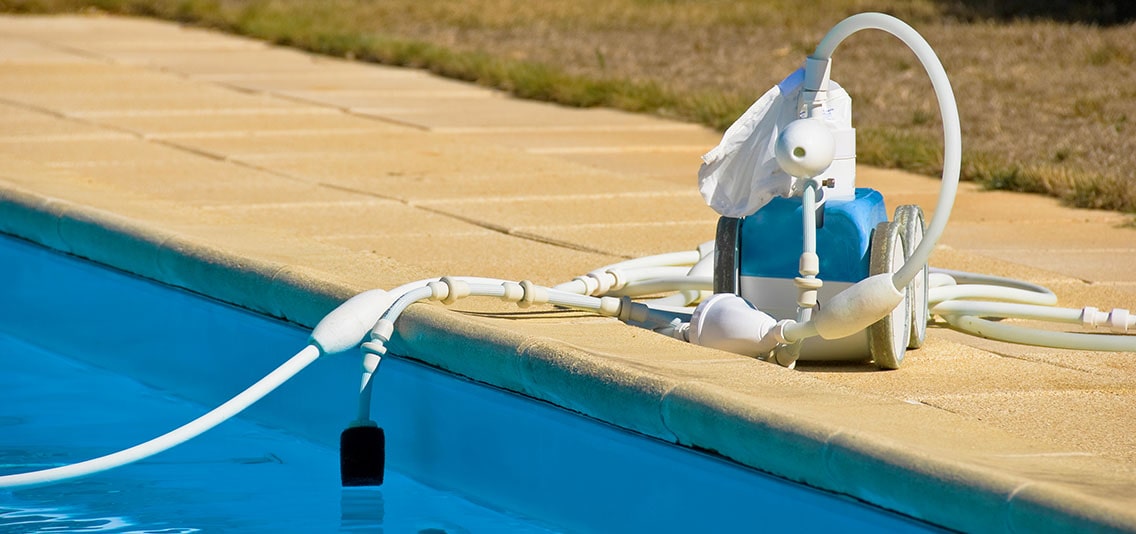
Pressure-side pool cleaners attach to the pressure side of a pool pump. It splits the water flowing into it into three separate streams. The first stream powers the thruster, which is the component that propels the unit around the bottom of the pool.
The second stream directs water to the venturi, which creates a vacuum that sucks up leaves and debris and deposits them into the bag on top of the unit. The third stream gets directed to a sweeper tail on the unit’s back.
The tail is one of the best things about a pressure cleaner because of its effectiveness in scrubbing the floor. It also kicks up dirt, making it easier for the pool’s filter to capture it. There are two types of pressure-side pool cleaners. One requires a booster pump to work, and the other runs off your main circulation pump.
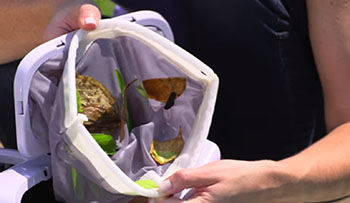
The Advantages of Pressure-Side Cleaners
Pressure side cleaners can usually pick up more debris than suction side ones. Pressure cleaners don’t depend on your pool’s dedicated filtration system, so there’s not as much wear and tear on equipment. There’s also zero chance that large debris will get clogged in your pool’s filter.
This type of machine is perfect if you have large debris such as bugs, leaves, or grass falling into your pool. Most of them do a pretty good job of picking up floating debris and are low maintenance and durable.
The Disadvantages of Pressure-Side Cleaners
Depending on the type of pressure cleaner you buy, you’ll either need a booster pump or a dedicated return line plumbed into your pool.
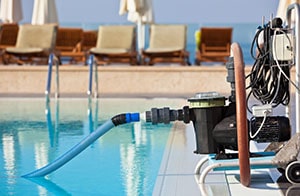
That’s because a stream of pressurized water is required to move the unit around.
If you purchase a model that requires a separate booster pump, you’ll be paying more for electricity. On the other hand, pressure cleaners that work off your main pump draw considerable power from the pool’s dedicated filtration system.
Pressure side pool cleaners don’t do too well at sucking up fine particles such as sand. They’re incapable of scrubbing, so they won’t be able to scour away algae like some other types of pool cleaners can.
Suction-Side Cleaners
Suction pool cleaners are essentially vacuum cleaners that run off the suction power of your primary pool pump. You connect the machine to either a dedicated suction line or directly to your pool’s skimmer. It uses the suction created by your pump to move around your pool so it can capture debris.
A suction cleaner has a “throat” mechanism that allows dirt, sand, and other particulate matter to pass right through it. The throat is a round hole of limited size that can clog when larger debris gets sucked in.
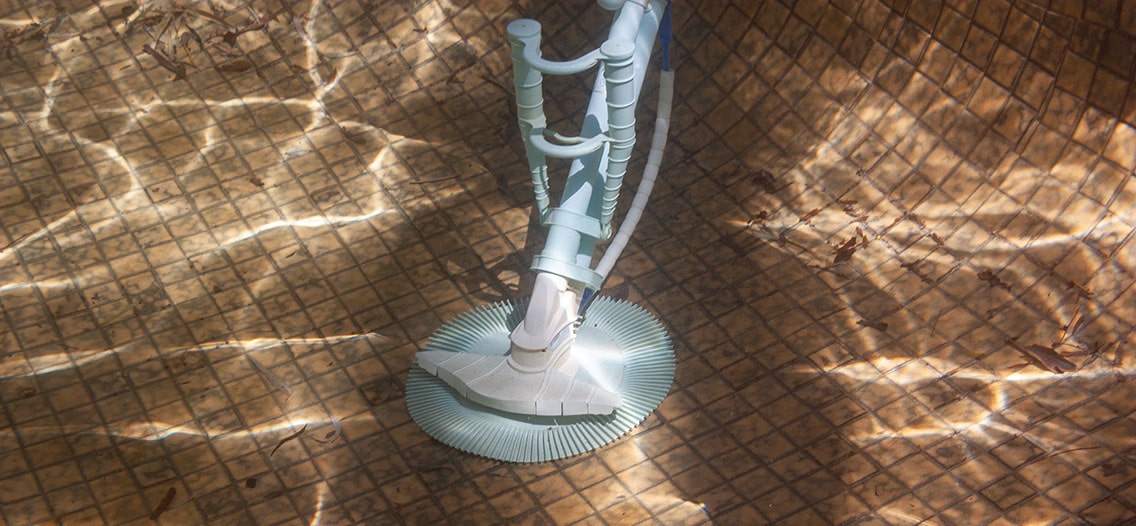
Because suction pool cleaners rely on the power of your pool pump, they have no electronics of their own and few moving parts. This makes them less likely to break down and relatively easy to repair. If you want a sturdy machine that’s solidly constructed, a suction pool cleaner might be just what the doctor ordered.
Because you don’t need a booster pump, your electricity costs will typically be lower than with a pressure side machine. Installation is easy, usually only taking a few minutes.
Generally, suction-side cleaners are best for picking up mid-sized debris like small leaves and insects. Most of them are also good at sucking up the extra-fine particulate debris that causes cloudy water. You’re going to want to match the size of your cleaner’s intake to match the size of aqueous garbage you need to clean up.
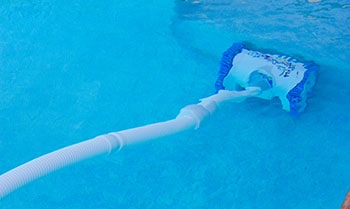
Disadvantages of Suction Side Cleaners
A suction-side cleaner runs off your pool pump and will generally draw away 75% of the pump’s energy. That means if your pump doesn’t have a whole lot of sucking power, don’t buy this type of cleaner.
Because it relies on your pool’s dedicated filtration system, you’re going to experience more wear and tear with a suction machine than you would with a pressure cleaner. Not all suction cleaners can climb walls. If this is something you require in a pool cleaning device, check out if this is the case before you plunk down your hard-earned money.
Sometimes, suction cleaners struggle with larger debris because leaves, twigs, and flowers can get caught in the throat. When this happens, the cleaner will stop wherever it happens to be in the pool.
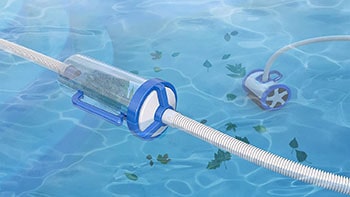
Suction cleaners generally don’t have built-in debris collection bags like pressure cleaners do. It’s probably a good idea to get a leaf canister for your suction cleaner. That’s because you probably don’t want to overload your pool filter with all kinds of nasty debris.
This could shorten its useful life, causing you to spend a lot more money than you need to. It’s also good practice to backwash your sand filter or clean out your pool filter cartridge after using a suction cleaner.
That’s because all the dirt you just cleaned out of the pool goes straight to your pool’s filter.
Robotic Pool Cleaners
Robotic pool cleaners use their electronic brain and cutting-edge algorithms to map out a super-efficient cleaning path around your pool. It might seem like it would be the most expensive type because of how technologically advanced it is compared to the other kinds.
However, after buying a booster pump for a pressure cleaner or a leaf canister for a suction device, a robotic cleaner might be the most cost-effective choice.
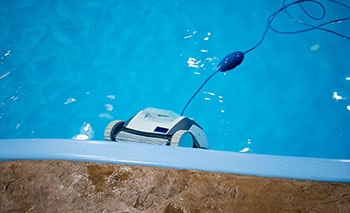
Advantages of Robotic Pool Cleaners
A robotic cleaner contains its own built-in pump and filter, which means it’s entirely self-contained. It uses its pump to not only clean the pool but circulate the water. By doing this, it decreases the stress on the pool’s filter and pump.
One thing we particularly love about robotic pool cleaners is their unparalleled ability to thoroughly scrub all pool surfaces. Robotic cleaners are usually exceptionally proficient at cleaning large debris and fine particulate matter from pools.
Many pressure and suction cleaners only suck up debris. However, robotic units vigorously scour the walls, waterline, sides, and floor of your pool, dislodging gunk and algae in the process. Some models even have a third motor-driven brush, which boosts their scrubbing power.
Unlike other pool cleaners where some assembly is required, robotic ones are plug-and-play. This means you simply power them on, drop them in, and watch them go to town cleaning nasty dirt and stains.
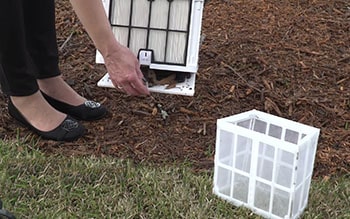
Not only is a robotic cleaner super easy to use, but it’s also low maintenance. Simply take it out of the pool, empty the debris canister, rinse the filter, and it’s ready for another round of cleaning.
Some of the more advanced robotic cleaners let you program them to clean only specific parts of the pool, such as the floor, the walls, or the pool’s waterline. There’s an increasing number of models with Bluetooth functionality, which allows you to connect your robot to your smartphone.
Most of the units being manufactured these days come with large baskets for picking up bigger debris. Many of them have top-loading cartridges or canisters. With this type of configuration, you won’t have to flip the unit upside down to clean it, which can be a hassle.
Robotic pool cleaners have low electricity costs, which means they’re also eco-friendly. They’re incredibly quick at cleaning, typically finishing the job in less than 2.5 hours. Many robotic cleaners have longer warranties than other types of cleaners—sometimes as long as three years.
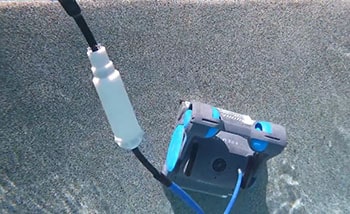
Disadvantages of Robotic Pool Cleaners
Because a robotic pool cleaner is more technologically advanced than the other kinds, the possibility of it breaking down and having to make expensive repairs is greater. The less complicated designs of suction and pressure machines mean that many users can fix their own units.
The cord of a robot cleaner can get tangled up in the unit. Because of this, it’s probably best to purchase a model that has an anti-tangle swivel. Some robotic pool cleaners can be a little heavy, making them difficult to remove from the water once the cleaning is done.
While robotic pool cleaners do a bang-up job cleaning pool surfaces, they can’t suck up floating debris. To eradicate this stuff from your swimming water, you’ll either need to buy a surface skimmer or pick it up using a manual skimmer with a telescopic attachment.
Your robot can only reach as far as its electrical cord allows. This means it might not extend to every part of your pool. Robotic pool cleaners tend to have smaller debris capacities than other types. Because of this, a pool robot’s filters are going to get dirtier much more quickly.
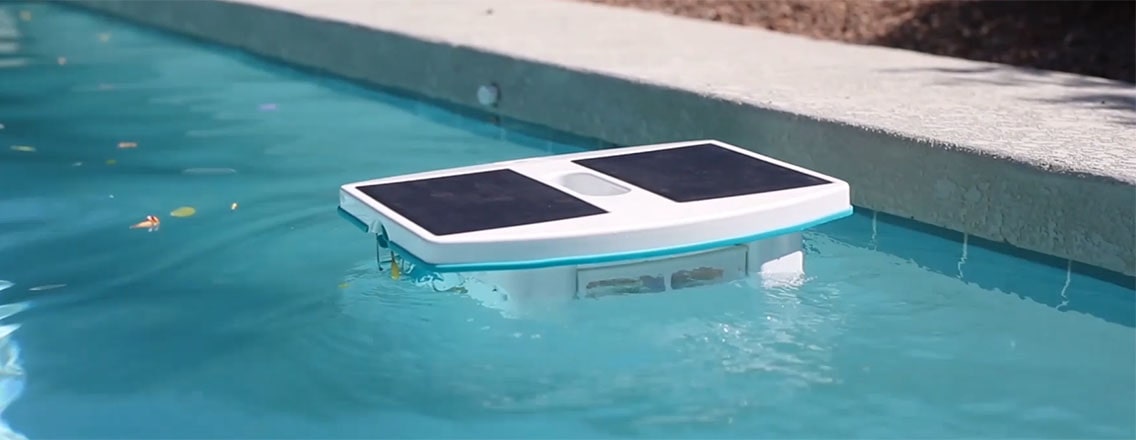
Using automatic pool skimmers to skim all the floating debris off the surface of your pool is a fantastic way to reduce the time you spend on pool-related tasks. This gives you more time to enjoy the balmy summer months.
Automatic skimmers go after large debris, including nuts, leaves, acorns, and insects. They’re designed to filter out whatever is in the upper 1/3 inch of your pool water. Most of them don’t collect fine debris, leaving that for the primary filter to remove.
Like every other automatic pool cleaner in this article, pool skimmers generally work by using suction. Water gets pulled through the skimmer, allowing a filter bag or basket to trap floating garbage while water passes right through.
How automatic skimmers create suction varies from one unit to another. Some use motor-driven propellers or paddles, which can be solar- or battery-powered. Others rely on the pool pump to create suction.
Some skimmers attach to your return jets, and other ones use whirlpools to suck debris in. You can even get a skimmer that works via remote control.
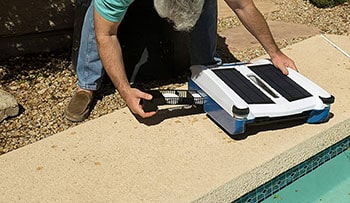
Advantages of Automatic Pool Skimmers
If you buy a solar-powered skimmer, you won’t have to pay a dime for electricity. Because they come with batteries that store the sun’s power, they can run at night. Many of them have chlorine dispensers, so you can multitask—sanitize the water while the unit is skimming out all the icky stuff.
Skimmers that work with the return jets take a lot of strain off your pool filter.
Disadvantages of Automatic Pool Skimmers
A solar-powered skimmer can get caught in the pool’s skimmer. This usually happens at night, after the battery gets low. Some skimmers require that you purchase a pool vacuum, which increases the amount of money you need to spend.
A few of the skimmers that create whirlpools require that you periodically spray them with a garden hose to remove accumulated debris. This can get tedious after a while. Unfortunately, some models are manufactured from cheap plastic, making them flimsy and all-too-breakable.
Water can get into the battery compartment on some units, causing the batteries to corrode.
Choosing an Automatic Pool Cleaner
When choosing a type of automatic pool cleaner, consider how much money you’re willing to spend, the size of your pool, and how much dirt and debris your pool accumulates.
By using the knowledge contained in this article, you’ll be able to make a more informed decision, increasing the possibility you’ll select the best cleaner for you. If you want to see which automatic pool cleaners we recommend, check out our guide.

Pool Maintenance Tips & Tricks
